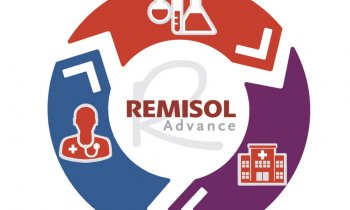The Healthcare Information and Management Systems Society
The not-for-profit Chicago-based organisation HIMSS aims to boost electronic health records, analytics, mobile and other technologies by ‘meaningful use’ or other financial stimuli. Cornelia Wels-Maug reports on highlights at the HIMSS 14 conference and exhibition.

In his keynote address, Mark Bertolini, CEO of health insurer Aetna, quantified the misuse of resources in the US healthcare system to be approximately US $765 billion annually, ‘that’s 30 percent of all healthcare spending’ he explained.
This makes for a staggering waste of resources that might be better employed elsewhere.
Keynote speaker Hillary Rodham Clinton also pointed to the costs of delivering healthcare and the waste of resources in the process and juxtaposes those with the role of IT: ‘Right now we know that IT is helping to increase efficiency and save money and improve quality of care’. She proposed to ‘rethink healthcare IT’. Clinton argued that this decade provides us ‘with the opportunity to build the IT infrastructure needed to both eliminate waste and deliver better healthcare outcomes’.
Bertolini was more forthcoming with how to put cost cutting into practice when he stipulated to ‘creatively destroying the current business model to enable a new one that will have an impact on our healthcare cost by…..move[ing] the care as far away from the highest cost areas to doctor’s offices, to ambulatory facilities, to minute clinics all the way down to the home’ and by ‘connecting private exchanges here and around the world to ACOs’.
The age of accountable care
The Affordable Care Act mandates the establishment of accountable care organisations (ACOs) in the US. Just as in previous years, ACOs were a central topic at HIMSS. They alter the business relationship between payers, providers and patients completely. In the new model, providers will only be paid for quality patient outcomes, not for the number of patients seen or procedures approved. This implies that both payers and providers need to reduce costs and improve care for the populations they manage. As a consequence, there is a growing urge for payers to come up with innovation in payment models, revenue cycle management solutions and analytics, as exhibited by the likes of WellPoint and Humana at HIMSS. Especially the analysis of large datasets (often referred to as big data) is crucial to establish the effectiveness of medical treatments. Clinton summed this up pointedly, ‘It’s important to be guided by evidence about what works and what doesn’t … not ideology or personally held beliefs’. Grounding therapies on evidence to advance population health ran like a mantra throughout the show.
For ACOs to work there needs to be a constant flux of patient information between the involved stakeholders, this emphasises the importance of interoperability. In response to this, HIMSS significantly expanded its Interoperability Showcase and launched a new benchmarking ‘Continuity of Care Maturity Model’ that ‘measures the readiness of an organisation to deliver continuity of care as well as the maturity of a healthcare system in the continuity of care delivery’. It is modelled after the HIMSS Electronic Medical Record Adoption Model (EMRAM). This also exemplifies the extent to which interoperability and connecting health information systems remain alarming impediments in the US and elsewhere. Security of data and privacy, along with identity authentication were further challenges that were discussed in various forms during HIMSS.
Can healthcare learn from Amazon?
The healthcare sector lags behind the application of IT compared to other industry verticals, especially the financial and retail sectors. Which lessons can it learn from those earlier adopters? Ed Park, COO of Athenahealth, a vendor of cloud-based medical software, suggested learning from Amazon by borrowing its core philosophy: ‘Putting the customer first’ by ‘connect[ing] healthcare and its key audiences like never before’.
In Amazon-like style, he sketched a vision of a healthcare system that makes recommendations ‘for patients (around which physicians patients might choose based on a preference for a past physician) or for doctors (that suggest if you found treatment X effective for disease Y, you might appreciate treatment W for disease U)’.
Whether Ed Park’s vision will find a broad consensus remains to be seen; however, it opens the mind to exploring new paths to better patient outcomes.
That this vision is strongly based on the innovative use of IT is what to look out for at HIMSS.
16.05.2014








